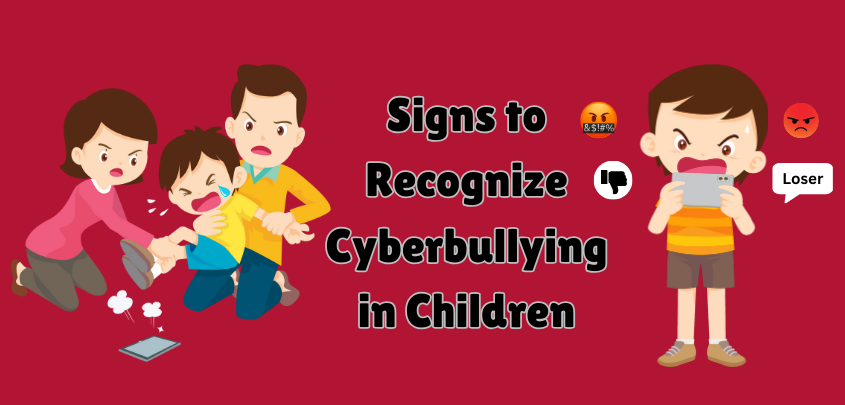
05, Jul, 2024
Recognizing Signs of Cyberbullying in Children: Behavioral changes to look out for
Millions of children are impacted by the widespread problem of cyberbullying in our increasingly digital age. For parents, teachers, and other caregivers to successfully intervene and help victims, they must be aware of the telltale indications of cyberbullying. This guide outlines the key behavioral changes that may indicate that a child is being cyberbullied, as well as how to recognize and address this harmful behavior.
What is Cyberbullying?
Cyberbullying occurs when someone uses technology to harass, threaten, embarrass, or target another individual. It can happen on a variety of devices, including game systems, tablets, computers, and cellphones. Cyberbullying, in contrast to traditional bullying, can occur around-the-clock and can be more difficult to stop. Some examples include sending hurtful emails or texts, starting online rumors, uploading embarrassing pictures or videos, and making up false profiles to make others feel bad about themselves.
Recognizing Behavioral Changes that Signal Cyberbullying
1. Increasing or Avoiding Device Use
Sign: Abrupt shifts in screen usage, either entirely avoiding it or using it excessively.
Explanation: To avoid harassment, victims may spend more time on the internet confronting bullies or avoiding social media altogether. Both activities show an unhealthy reaction to online interactions.
2. Emotional Anxiety After Device Use
Sign: Visible distress, anxiety, or anger after using the internet or a phone.
Explanation:Reactions to cyberbullying may manifest as extreme behaviors in children, such as yelling, crying, or throwing their phone. These emotions could represent tension and worry resulting from unfavorable online experiences.
3. Deleting or creating new social media accounts
Sign: Frequently updating social media profiles, including the creation of new ones and the deletion of old ones.
Explanation: Kids may attempt to hide from internet bullying by taking on different identities. Their actions imply that they are making an effort to evade continuous harassment.
4. Withdrawing from social involvement
Sign: Avoiding social gatherings, family, and friends, and spending a lot of time alone.
Explanation: Victims of cyberbullying may have social disengagement because they feel alone and uneasy in the presence of peers who may be part of or aware of the bullying.
5. Dramatic Mood Swings
Sign: Notable mood swings, such as increased sadness, anger, or depression.
Explanation: Mood swings and indicators of mental health conditions like anxiety and depression can result from persistent emotions of humiliation and helplessness.
6. Physical Complaints
Sign: Recurrent mentions of headaches, nausea, or other unusual physical complaints.
Explanation: Cyberbullying-related stress can emerge physically, resulting in actual and persistent health symptoms that are otherwise undiagnosed.
7. Nervous While Getting Messages
Sign: Anxiety or unsteadiness upon getting alerts, messages, or emails.
Explanation: A child who is afraid of receiving texts may be anticipating bad encounters, indicating continuous stress from cyberbullying.
8. Disturbances in Sleep
Signs: Includes insomnia, difficulty falling asleep, and excessive daytime sleepiness.
Explanation: Stress and anxiety brought on by cyberbullying can cause sleep patterns in children to be disturbed, which can result in daytime tiredness and trouble focusing.
9. Discussing Self-Harm
Sign: Expressing suicidal or self-harming thoughts.
Explanation: Prolonged and severe cyberbullying might cause suicidal thoughts and depression. If a child discloses self-harm, quick action should be taken.
10. Loss of Interest in Hobbies
Sign: An abrupt lack of interest in past hobbies or pastimes.
Explanation: Bullies might ridicule a child’s interests, causing them to give up hobbies and activities they previously enjoyed.
The first step in protecting your child from the negative impacts of cyberbullying is to recognize its warning signs. By being vigilant and proactive, parents and other adults who look after children can provide them with the support and guidance they require to navigate and overcome cyberbullying.In order to lessen the detrimental effects on a child’s mental and emotional health, early detection and appropriate response are essential.
